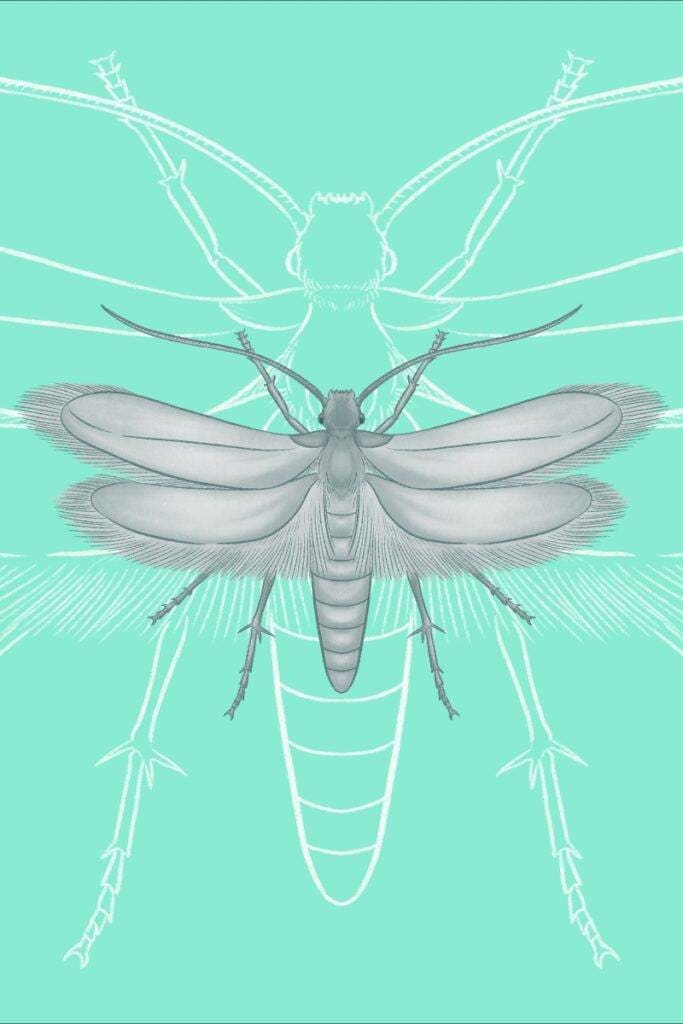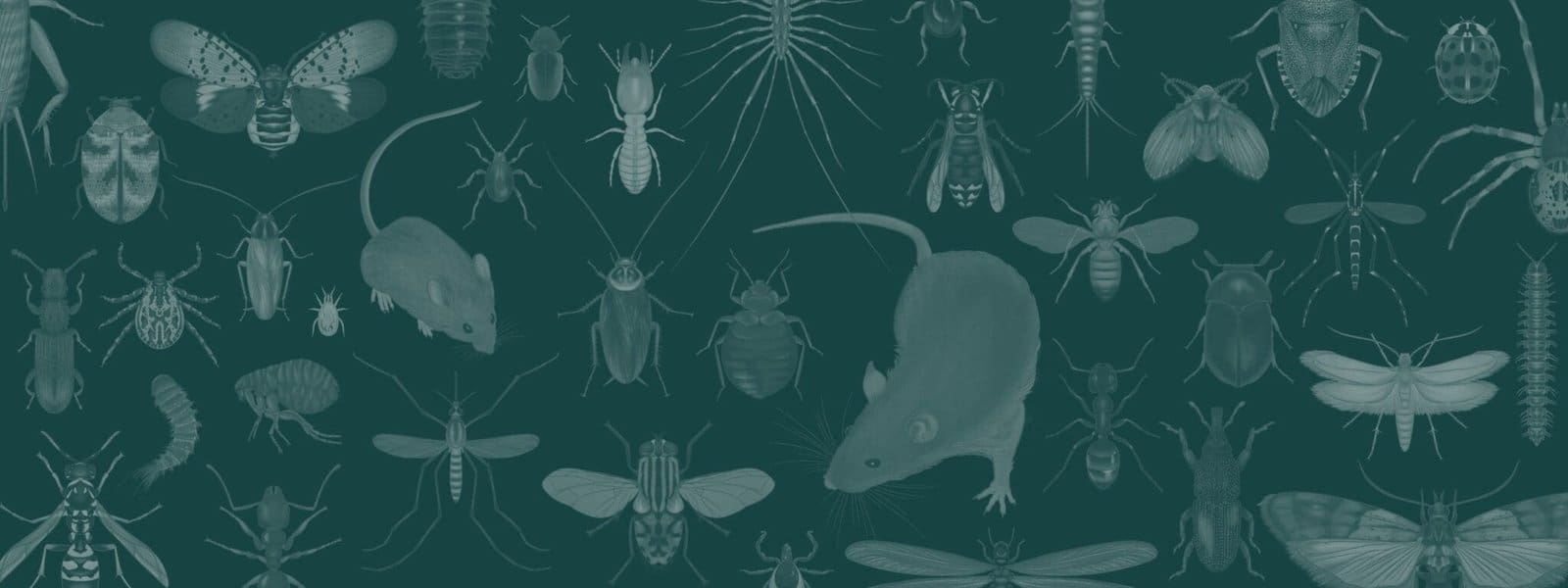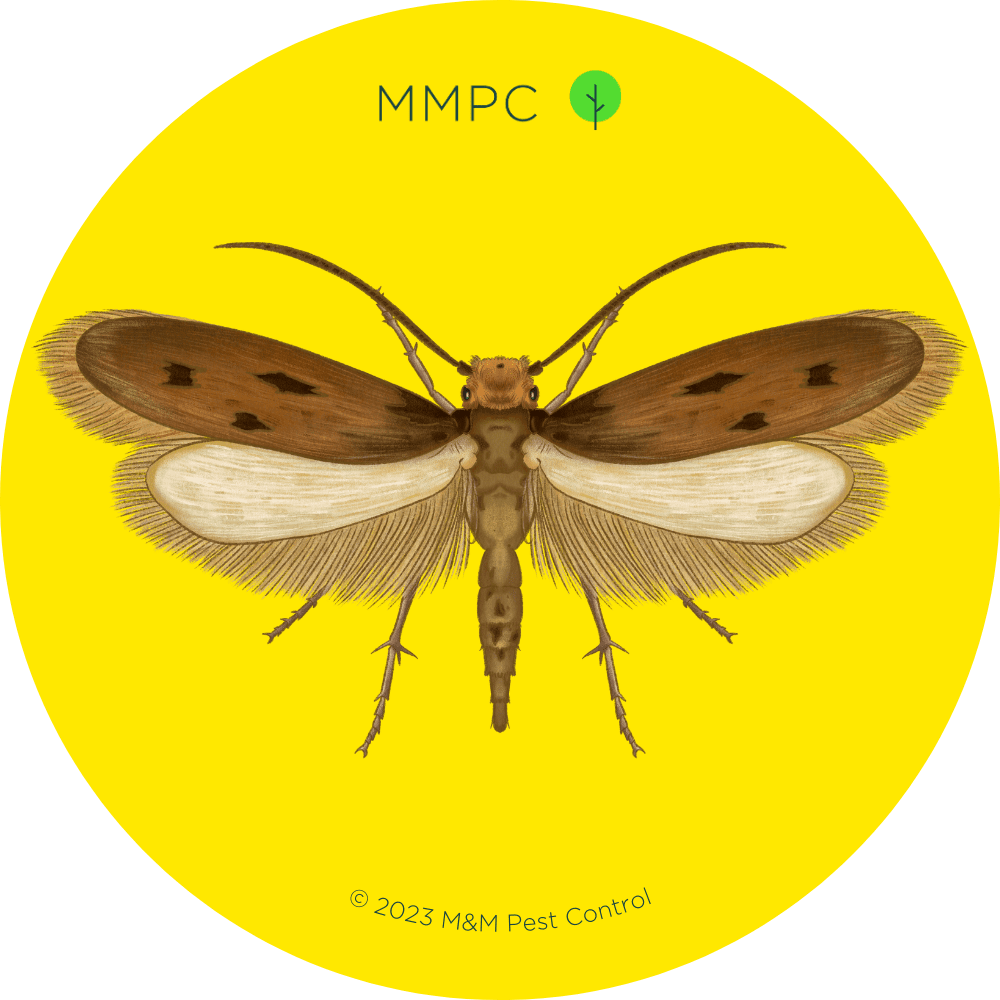
About Moths
Moths are winged insects belonging to the order group as butterflies (Lepidoptera), and they often play important an ecological role as pollinators. However, certain species of moths can cause significant damage to fabrics and food in peoples’ homes.
- Most moths are primarily active at night (nocturnal).
- A female moth may lay as many as 100–300 eggs, which hatch in 1–2 weeks in warm environments.
- Their larvae resemble creamy-white colored caterpillars that measure about 1/2″ in length (12–13 mm) and spin silky webs.
- Contrary to popular belief, moths are not actually drawn to light; instead, artificial lights actually disorient them, making them flutter around erratically.
Moths in Your Home
Two common types of pest moths can invade your home: clothes moths and pantry moths. Both typically enter through unnoticed gaps in windows, doors, or screens. They can also hitchhike inside on secondhand clothing, used furniture, or contaminated food products.
Clothes moths target natural fibers like wool, cashmere, and fur. Their larvae eat holes in clothes and other fabrics. To get rid of them, wash or dry clean infested clothing and linens. Thoroughly vacuum closets, drawers, and surrounding areas, paying close attention to corners and crevices. Consider using moth traps or cedar repellents to deter future infestations.
Pantry moths, on the other hand, seek out grains, cereals, dried fruits, nuts, and other dry goods. They typically take up residence in kitchens and pantries, where their larvae feed on and contaminate stored foods. To get rid of them, discard infested food items and clean your pantry thoroughly. Prevent re-infestation by keeping food in sealed, airtight containers.

Pest Species in New York City / Tri-State Area:
Webbing Clothes Moth
Tineola bisselliella
Clothes moth larvae feed on wool and other animal-based materials like silk, fur, and feathers. Adult clothes moths are harmless and tend to weakly flutter around infested items (usually in dark closets and attics).
Webbing clothes moths are the most common species in the United States. Their larvae leave patches and tunnels of silk webbing on clothing and other fabrics that they feed on.

Size: 1/4″ – 1/3″ long (6 – 8 mm); about the size of a paper hole punch
Color: Light brownish-yellow with a golden shine
Shape: Narrow body with a furry head, long antennae, 6 legs, and 2 pairs of fringed wings
Identifying Features
- 6 legs
- Long, thin antennae that are usually darker than the rest of its body
- Furry head topped with a tuft of reddish-golden hairs
- 2 pairs of slender wings with shiny golden scales and fringed with golden hair
Case-Bearing Clothes Moth
Tinea pellionella
Clothes moth larvae feed on wool and other animal-based materials like silk, fur, and feathers. Adult clothes moths are harmless and tend to weakly flutter around infested items (usually in dark closets and attics).
Case-bearing (or “casemaking”) clothes moths, get their name from the tube-like cases that their larvae live in and carry around while feeding.
These cases are made from silk intertwined with fibers from whatever fabric they’re feeding on. If a larva is disturbed, it will retreat into its case.

Size: 1/4″ – 1/3″ long (6 – 8 mm); about the size of a paper hole punch
Color: Silvery-gray and brown
Shape: Narrow body with a furry head, long antennae, 6 legs, and 2 pairs of fringed wings
Identifying Features
- 6 legs
- Long, thin antennae that are usually darker than the rest of its body
- Furry head topped with a tuft of dark grayish hairs
- 2 pairs of slender wings fringed with long hairs
- 3 faint dark spots on each forewing
Pantry Moth / Indianmeal Moth
Plodia interpunctella
Pantry moths are primarily pests of stored food products like grains, seeds, cereal, rice, pasta, flour, spices, dried fruit, and pet food.
Their larvae can chew small holes in plastic bags and cardboard containers, and they leave behind silk webbing around and inside of the food they infest. Adults moths lay their eggs directly in contaminated food, which hatch within a week.
Infestations typically originate from already-infested food purchased from a grocery store or food processing facility.

Size: 5/16″ – 3/8″ long (8 – 10 mm); about the size of an apple seed
Color: Reddish-bronze and gray
Shape: Oval-shaped body with long antennae, 6 legs, and 2 pairs of fringed wings
Identifying Features
- 6 legs
- Long, thin antennae
- 2 pairs of bicolored wings fringed with long hairs
- Forewings are 2/3 reddish-brown with irregular black bands, and 1/3 pale gray
- Hindwings are pale gray


